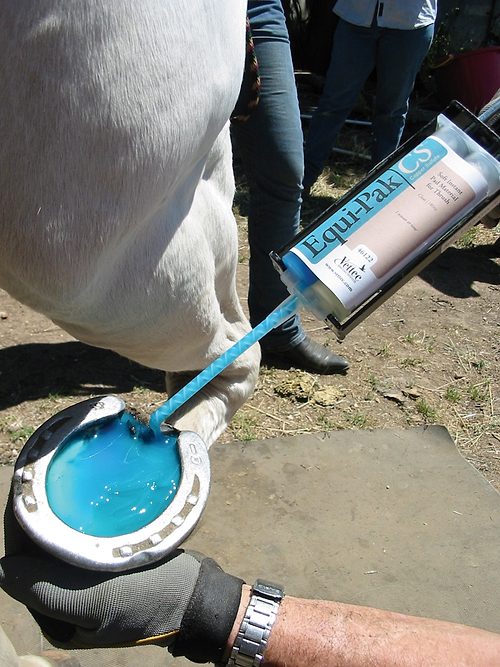Stress. Although it is a natural part of life, stress can have a negative effect on health, and not just for humans.
In fact, horses can experience a variety of stressors that impact their health. Sometimes, signs of stress can show up in a horse’s feet as hoof rings. To keep horses happy and healthy, it’s crucial for horse owners to identify stressors that can lead to hoof rings, and provide proper care to hooves when needed.
Causes Of Hoof Rings
Hoof rings are likely caused by external stressors. They show up as a deviation around the hoof wall from the coronary band, the area that provides nutrition to hooves and allows them to grow. A variety of stressors can cause hoof rings to form, which is why some people even call them “stress rings.” Possible stressors include:
• Change of diet. When seasons change, the sugar content in grass changes with them. Lush green grass can cause spikes in sugar content. When horses consume the grass, their bodies may not be used to the high sugar content, which impacts their body all the way down to the hooves. Additionally, if a horse owner switches their horse’s feed, this can also cause hoof rings as the horse adjusts to a new diet.
• Environmental changes. When a horse experiences an adjustment in weather, temperature or even social environment, this can be stressful for them. If hoof rings develop after a major environmental change, it may be a sign that horse owners need to identify the stressor and adjust it to make their horse feel comfortable again.
• Laminitis. A bout of laminitis is an obvious stressor to a horse. The inflammation of the lamina causes a decrease in blood supply, which can lead to hoof rings or eventually lameness if left untreated.
An important thing to note is that once hoof rings are visible, the horse has been stressed for quite some time already. Thus, it’s wise to take precautionary measures to prevent hoof rings, like being aware of a horse’s surroundings and potential stressors.
Managing Hoof Rings
Fortunately, hoof rings are not usually detrimental. A little bit of stress is normal and as long as horse owners provide their horses with frequent hoof care and maintenance, the rings should subside on their own. However, if a horse is foundered, it is vital to tend to the hooves as quickly as possible, as laminitis can be extremely painful for a horse and can lead to lameness.
There is a visual difference between normal hoof rings and those due to founder. As opposed to being evenly spaced around the hoof wall, the rings of a foundered horse will slant upward slightly. This is due to the uneven growth rate of the heels and toes. When this happens, horse owners can relieve the stress between the hoof wall and the lamina with a pour-in pad. These materials are designed to increase surface area for weight bearing so that the sole can take on some of the horse’s weight, and not just the hoof wall. Products such as Equi-Pak CS from Vettec are made of urethane adhesive that bonds to the sole and produces a soft, resilient supportive pad material. Pour-in pads elevate the pressure off the coffin bone to make horses more comfortable during the healing process.
The hooves support a horse’s whole body, so it’s important for horse owners to maintain a regular maintenance schedule and keep hooves healthy.








